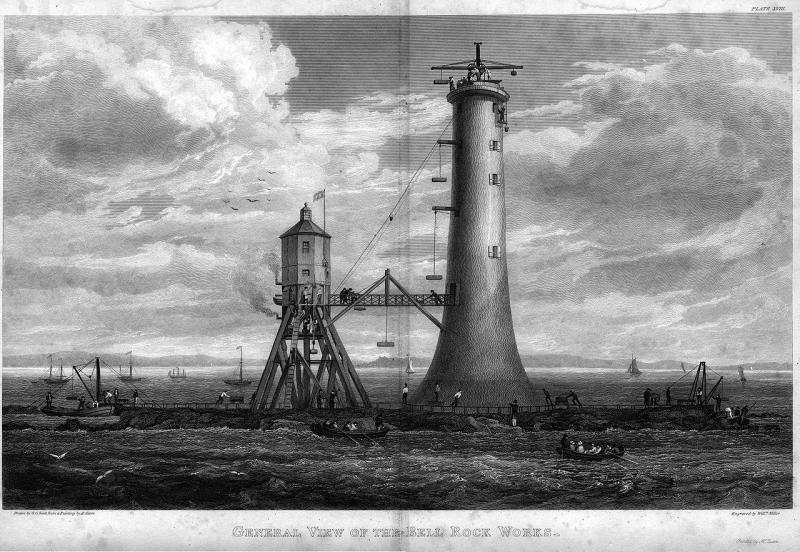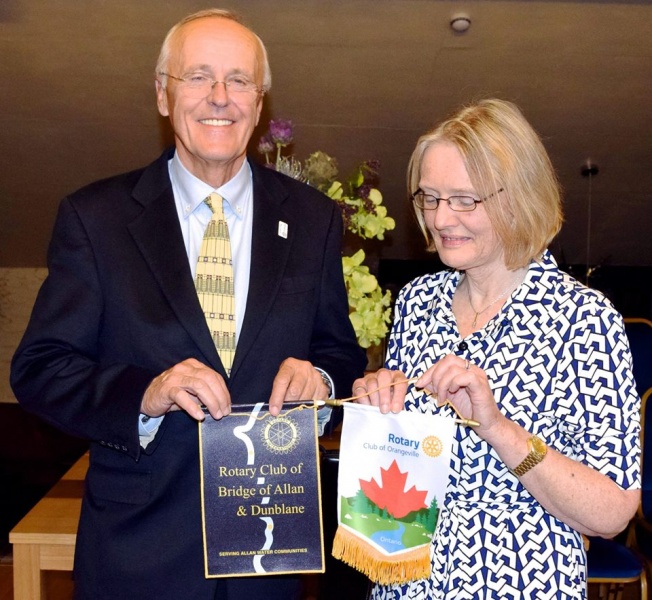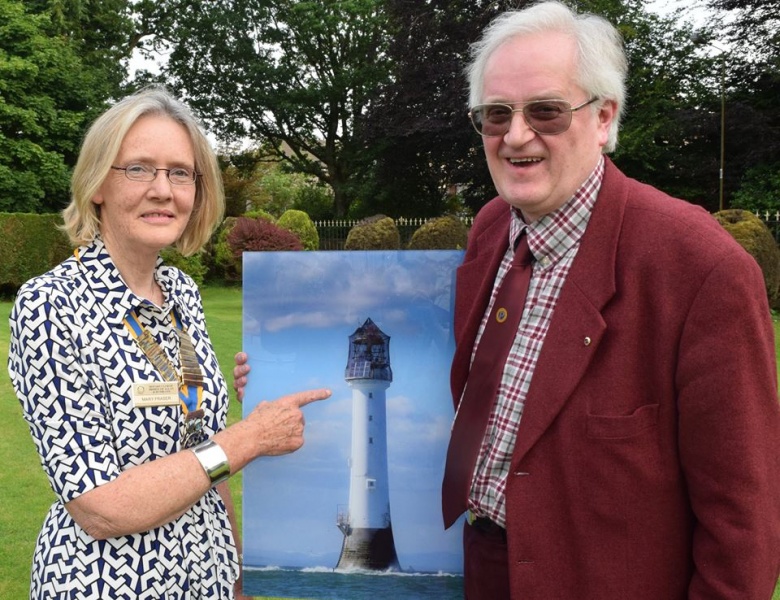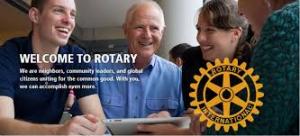Dakers Fleming - Lighthouses
Thu, Aug 13th 2015 at 6:00 pm - 9:00 pm

SHINING A LIGHT ON THE BELL ROCK LIGHTHOUSE
President Mary Fraser opened the weekly meeting of the Bridge of Allan and Dunblane Rotary Club by welcoming a visiting Rotarian from Canada. Knut Holmsen, President of the Orangeville Rotary Club of Canada then exchanged Rotary banners with Mary.

The speaker for the night was Dakers Fleming, an architect with a particular interest in lighthouses, and the Bell Rock Lighthouse in particular. Lighthouses have a particular attraction for many of us. Like the late night shipping forecast listened to by thousands, they focus our thoughts on the continuing battle of seafarers against the elements. Lighthouses, with the comfort of their guiding lights, suggest the return to the safety of harbour and the warmth of home. These and other similar thoughts no doubt resonated in the minds of Club members as Dakers told the history of the Bell Rock Lighthouse, which is some 13 miles off the Scottish coast at Arbroath.

The construction of the Bell Rock Lighthouse, started in 1806, was the first lighthouse in the world to be built on a sea-washed rock. The challenge was to build a lighthouse on a rock which is covered by the sea twice a day, and where the elements were unpredictable. Why build it in those extraordinarily difficult conditions? The Rock sits in a strategic position in the routes to both the Firth of Forth and the Firth of Tay, so, before the protection of the lighthouse, shipwrecks on the Rock were frequent. Encouraged and influenced by John Rennie, Robert Stevenson (the grandfather of the author Robert Louis Stevenson) designed the lighthouse and oversaw every detail of its construction.
The construction was an extraordinary achievement. Every granite stone used to construct the base of the Lighthouse was prefabricated to exacting standards in Arbroath and then carried out to the Rock by boat. This was a nine-hour boat journey fraught with all the difficulties of navigating these hostile waters. The stones were then transferred to smaller boats able to land at the jetty prepared for the purpose. Despite all the difficulties, the base was successfully completed, allowing the main structure to be started. To speed construction, a wooden tower was then built next to the base. In this the workers were housed in cramped and uncomfortable conditions alongside the construction equipment.
The superstructure was finally completed, and the revolutionary new revolving light installed, allowing operation to begin on 1 February 1811. Total cost was £77,000, subsequently reduced to £61,000 by the sale of the boats and other equipment by the canny Stevenson. Over the next 165 years, generations of the Stevenson family were involved in the construction of 200 lighthouses.
The Bell Rock Lighthouse became a famous landmark: the painter J.M.W. Tuner painted a dramatic picture of the Lighthouse being overwhelmed by waves rising up to the height of the light. The success of the Lighthouse in providing protection to shipping can be measured by the fact there have only been two wrecks on the Rock since its construction. One of these was HMS Argyllshire, which ran aground in World War One because the light had been switched off for security. Fortunately, all aboard were saved.
The Lighthouse is now no longer manned, but it continues, 214 year later, to provide guidance and protection to shipping. Its light can be seen for some 30 miles. Onshore, the former Signal Tower and Lighthouse Keepers’ houses were opened to the public in 1970 as a museum.
Alasdair Mackie, the Speaker’s Host, thanked Mr Fleming for a most interesting presentation. He had reflected on the enduring appeal of lighthouses, and the extraordinary story of the Bell Rock Lighthouse which the Club had greatly enjoyed.

.jpg)






